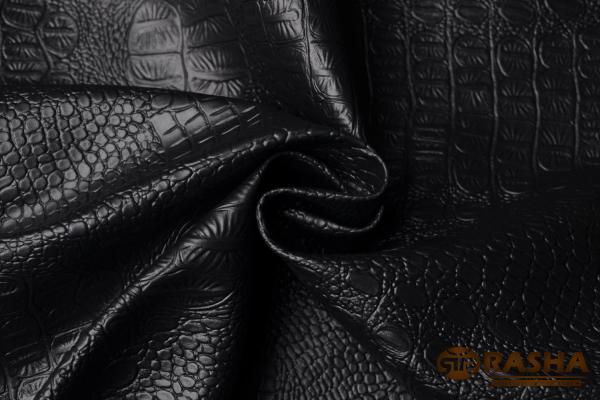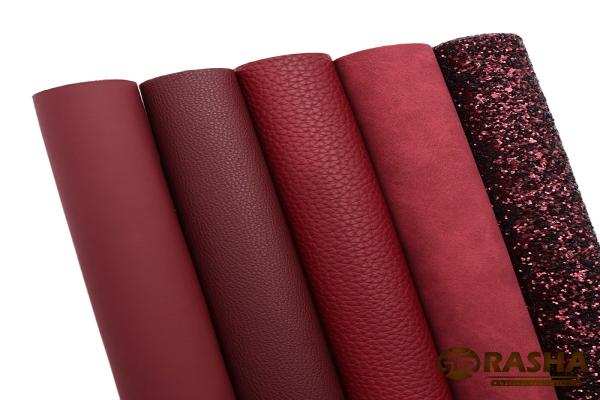When it comes to leather, there are various types and finishes that determine the aesthetic appeal and functionality of a product. Two popular categories are patent leather and full grain leather. Patent leather, known for its glossy, shiny appearance, has long been associated with formal, dressy attire and accessories. On the other hand, full grain leather, known for its durability, authenticity, and natural appearance, is widely used in a range of products in the fashion and luxury industries. This article provides a comprehensive comparison between patent leather and full grain leather, exploring their characteristics, manufacturing processes, and applications. 1. Characteristics of Patent Leather: Patent leather is a type of leather that has been treated with a glossy, lacquered finish, giving it a bright and reflective appearance. The finish is achieved through the application of multiple layers of varnish or lacquer, followed by a final high-gloss coating. Key characteristics of patent leather include: a) Appearance: Patent leather is renowned for its signature high shine, resembling a mirror-like finish. This glossy appearance enhances its visual appeal, making it an attractive choice for formal shoes, handbags, and accessories.
leather
 b) Texture: Patent leather has a smooth and often slick texture compared to other types of leather. This texture is a result of the coating process, which creates a protective layer that prevents the leather from absorbing moisture and retaining its bright shine. c) Water and Stain Resistance: The protective coating of patent leather makes it highly water and stain-resistant. This quality makes it easier to clean and maintain the leather’s appearance over time. d) Limited Breathability: Due to the coating applied to patent leather, it has limited breathability compared to other types of leather. This may cause discomfort when worn for extended periods, particularly in warm and humid climates. 2. Characteristics of Full Grain Leather: Full grain leather is considered the highest quality and most desirable form of leather. It is made from the top layer of the hide, which retains the natural grain and imperfections, giving it a unique and authentic appearance. Key characteristics of full grain leather include: a) Appearance: Full grain leather preserves the natural texture, grain, and markings of the animal hide, resulting in a distinguished and authentic look. It may display wrinkles, scars, and other imperfections that add to its charm and character. b) Durability: Being the strongest part of the hide, full grain leather is highly durable and resistant to wear and tear. The natural grain provides strength and longevity compared to other leather types, making it suitable for heavy-duty applications.
b) Texture: Patent leather has a smooth and often slick texture compared to other types of leather. This texture is a result of the coating process, which creates a protective layer that prevents the leather from absorbing moisture and retaining its bright shine. c) Water and Stain Resistance: The protective coating of patent leather makes it highly water and stain-resistant. This quality makes it easier to clean and maintain the leather’s appearance over time. d) Limited Breathability: Due to the coating applied to patent leather, it has limited breathability compared to other types of leather. This may cause discomfort when worn for extended periods, particularly in warm and humid climates. 2. Characteristics of Full Grain Leather: Full grain leather is considered the highest quality and most desirable form of leather. It is made from the top layer of the hide, which retains the natural grain and imperfections, giving it a unique and authentic appearance. Key characteristics of full grain leather include: a) Appearance: Full grain leather preserves the natural texture, grain, and markings of the animal hide, resulting in a distinguished and authentic look. It may display wrinkles, scars, and other imperfections that add to its charm and character. b) Durability: Being the strongest part of the hide, full grain leather is highly durable and resistant to wear and tear. The natural grain provides strength and longevity compared to other leather types, making it suitable for heavy-duty applications.
Specifications of leather
 c) Breathability: Full grain leather is known for its excellent breathability, allowing for the passage of air and moisture. This feature prevents the leather from trapping excessive heat and moisture, enhancing comfort when worn. d) Aging and Patina: Full grain leather develops a rich and appealing patina over time, rendering it even more attractive. With age, it becomes softer and acquires a distinct vintage look, adding to its overall aesthetic appeal. 3. Manufacturing Processes: The production methods for patent leather and full grain leather differ significantly, resulting in distinct characteristics and properties. a) Patent Leather Manufacturing Process: i. Preparing the hide: The hide is initially treated to remove hair and impurities, leaving a clean surface for the subsequent processes. ii. Applying the coating: Multiple layers of varnish or lacquer are applied to the leather surface to create the desired high-gloss finish. Each layer is carefully dried and polished before applying the next. iii. Final coating: A final layer of highly glossy lacquer is applied to enhance the shine and durability of the patent leather. iv. Drying and finishing: The treated hide is thoroughly dried, ensuring the coating is properly cured. Lastly, the leather is finished and polished to achieve a smooth and reflective surface. b) Full Grain Leather Manufacturing Process: i. Preparing the hide: The hide undergoes various treatments, including cleaning, dehairing, and preservation to remove impurities and stabilize the material. ii. Tanning: The hide is immersed in a tanning solution, typically made from plant or synthetic compounds. This process converts the raw hides into stable, natural leather, preserving its strength and durability. iii. Grading and selection: The leather is carefully graded and selected based on its quality, thickness, and suitability for specific applications. iv. Finishing: Full grain leather may undergo additional processes such as buffing or sanding to remove surface imperfections. It is then dried, softened, and treated with oils or waxes to enhance its appearance and feel.
c) Breathability: Full grain leather is known for its excellent breathability, allowing for the passage of air and moisture. This feature prevents the leather from trapping excessive heat and moisture, enhancing comfort when worn. d) Aging and Patina: Full grain leather develops a rich and appealing patina over time, rendering it even more attractive. With age, it becomes softer and acquires a distinct vintage look, adding to its overall aesthetic appeal. 3. Manufacturing Processes: The production methods for patent leather and full grain leather differ significantly, resulting in distinct characteristics and properties. a) Patent Leather Manufacturing Process: i. Preparing the hide: The hide is initially treated to remove hair and impurities, leaving a clean surface for the subsequent processes. ii. Applying the coating: Multiple layers of varnish or lacquer are applied to the leather surface to create the desired high-gloss finish. Each layer is carefully dried and polished before applying the next. iii. Final coating: A final layer of highly glossy lacquer is applied to enhance the shine and durability of the patent leather. iv. Drying and finishing: The treated hide is thoroughly dried, ensuring the coating is properly cured. Lastly, the leather is finished and polished to achieve a smooth and reflective surface. b) Full Grain Leather Manufacturing Process: i. Preparing the hide: The hide undergoes various treatments, including cleaning, dehairing, and preservation to remove impurities and stabilize the material. ii. Tanning: The hide is immersed in a tanning solution, typically made from plant or synthetic compounds. This process converts the raw hides into stable, natural leather, preserving its strength and durability. iii. Grading and selection: The leather is carefully graded and selected based on its quality, thickness, and suitability for specific applications. iv. Finishing: Full grain leather may undergo additional processes such as buffing or sanding to remove surface imperfections. It is then dried, softened, and treated with oils or waxes to enhance its appearance and feel.
buy leather
 4. Applications of Patent Leather and Full Grain Leather: a) Patent Leather Applications: i. Footwear: Patent leather is commonly used in formal shoes, oxfords, pumps, and high-heeled shoes, adding a touch of elegance and sophistication to the wearer’s ensemble. ii. Handbags and Accessories: Patent leather is popular in the production of handbags, wallets, belts, and other fashion accessories. Its glossy finish elevates the overall aesthetic appeal of these items. iii. Upholstery: Due to its water and stain resistance, patent leather is also used in upholstery applications, particularly in high-end furniture pieces and automobile seating. b) Full Grain Leather Applications: i. Apparel and Accessories: Full grain leather is widely used in the production of jackets, coats, bags, wallets, belts, and other accessories. Its durability and natural appearance make it a popular choice among consumers seeking quality and longevity. ii. Furniture: Full grain leather is commonly used in the manufacturing of luxurious furniture pieces, such as sofas, armchairs, and ottomans. Its unique texture and aging characteristics add to the premium feel of these products. iii. Automotive Interiors: Many luxury vehicles feature full grain leather upholstery, providing a luxurious and comfortable interior environment. Its durability and ability to develop an appealing patina over time make it a preferred choice. Conclusion: In the debate of patent leather vs full grain leather, both materials possess unique characteristics that appeal to different individuals and industries. Patent leather’s glossy, high-shine finish is often associated with formal wear and accessories, offering water and stain resistance and ease of maintenance. On the other hand, full grain leather’s durability, authenticity, and aging characteristics make it a sought-after choice for diverse applications, including apparel, accessories, furniture, and automotive interiors. Understanding the distinctions between patent leather and full grain leather helps consumers make informed choices based on their aesthetic preferences, desired functionality, and budget considerations.
4. Applications of Patent Leather and Full Grain Leather: a) Patent Leather Applications: i. Footwear: Patent leather is commonly used in formal shoes, oxfords, pumps, and high-heeled shoes, adding a touch of elegance and sophistication to the wearer’s ensemble. ii. Handbags and Accessories: Patent leather is popular in the production of handbags, wallets, belts, and other fashion accessories. Its glossy finish elevates the overall aesthetic appeal of these items. iii. Upholstery: Due to its water and stain resistance, patent leather is also used in upholstery applications, particularly in high-end furniture pieces and automobile seating. b) Full Grain Leather Applications: i. Apparel and Accessories: Full grain leather is widely used in the production of jackets, coats, bags, wallets, belts, and other accessories. Its durability and natural appearance make it a popular choice among consumers seeking quality and longevity. ii. Furniture: Full grain leather is commonly used in the manufacturing of luxurious furniture pieces, such as sofas, armchairs, and ottomans. Its unique texture and aging characteristics add to the premium feel of these products. iii. Automotive Interiors: Many luxury vehicles feature full grain leather upholstery, providing a luxurious and comfortable interior environment. Its durability and ability to develop an appealing patina over time make it a preferred choice. Conclusion: In the debate of patent leather vs full grain leather, both materials possess unique characteristics that appeal to different individuals and industries. Patent leather’s glossy, high-shine finish is often associated with formal wear and accessories, offering water and stain resistance and ease of maintenance. On the other hand, full grain leather’s durability, authenticity, and aging characteristics make it a sought-after choice for diverse applications, including apparel, accessories, furniture, and automotive interiors. Understanding the distinctions between patent leather and full grain leather helps consumers make informed choices based on their aesthetic preferences, desired functionality, and budget considerations.










Your comment submitted.